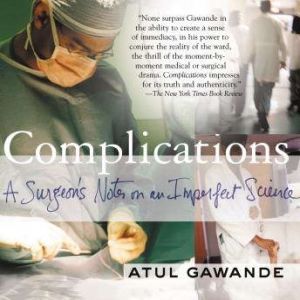



The title encapsulates the complexities doctors face. The title of this book, “complications”, is a pun: it both functions as the medical term “complication" and the commonly used word “complication”. Today, this book is going to show you that other side. However, people don't have the opportunity to actually get close to them: to see their eyebrows furrow when faced with complicated medical cases, or to learn about the other side of both them and medicine. People often come to surgeons as patients who want to be healed. These impressions are certainly correct, but do not reveal the whole story. Whenever people discuss these topics, the first images that appear in their minds are angels working in white robes, clinics, medicine, machines, surgeries that fight diseases, and amazing scientific breakthroughs that could extend human life. In the minds of the general public, the terms “surgeon" and “medicine” are always associated with rationality, accuracy, and order. Today we will unlock the book ‘Complications: A Surgeon’s Notes on An Imperfect Science’. In this article we review the risk factors, the clinical presentation, the diagnostic methods, as well as the management options of the most common AC after lung transplantation.Hi, welcome to Bookey. In some cases, different surgical approaches are occasionally required. Also, medical management, like antibiotic prophylaxis and therapy for endobronchial infections, or noninvasive positive-pressure ventilation in case of bronchomalacia, are used to treat an AC. Interventional bronchoscopic procedures, including balloon bronchoplasty, cryotherapy, laser photoresection, electrocautery, high-dose endobronchial brachytherapy, and bronchial stents are among the armamentarium. Prevention of some complications may be possible by early and aggressive medical management as well as by using certain surgical techniques for transplantation. The management of post-transplant bronchial complications needs a multispecialty team approach. Other complications include bronchial dehiscence, exophytic excessive granulation tissue formation, tracheo-bronchomalacia, bronchial fistulas, and endobronchial infections. The most frequently reported complication is bronchial stenosis. There are essentially six different airway complications post-lung transplantation. Several proposed risk factors to the development of airway complications have been identified, ranging from the surgical technique to the immunosuppressive regimen.

A decline in the incidence of airway complications (AC) had been a key feature to achieve the current outcomes. Overall survival rates of lung transplantation have improved since the first human lung transplantation was performed.


 0 kommentar(er)
0 kommentar(er)
